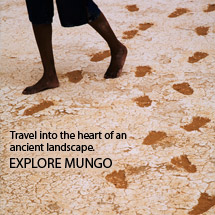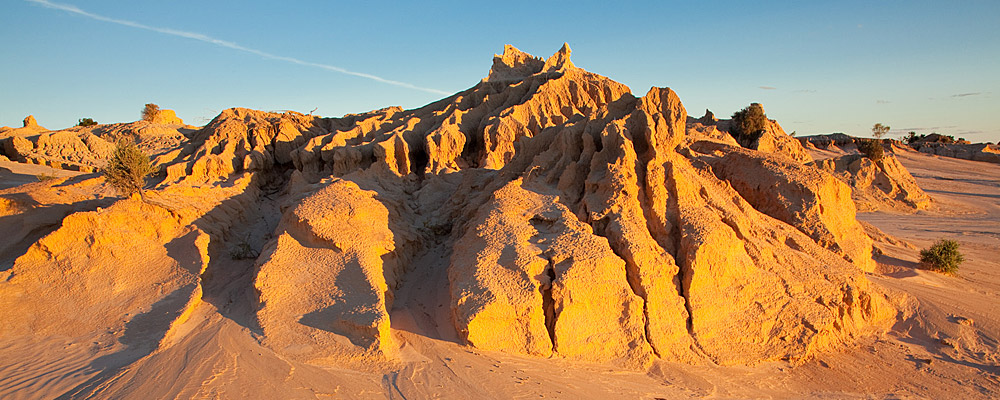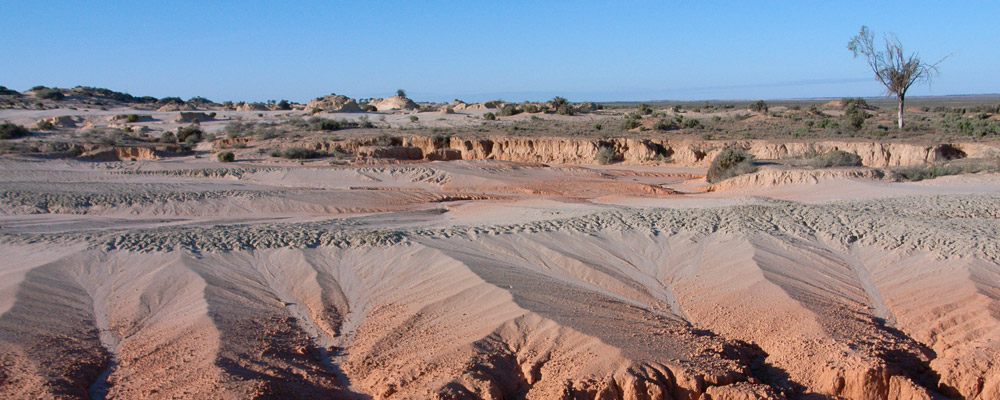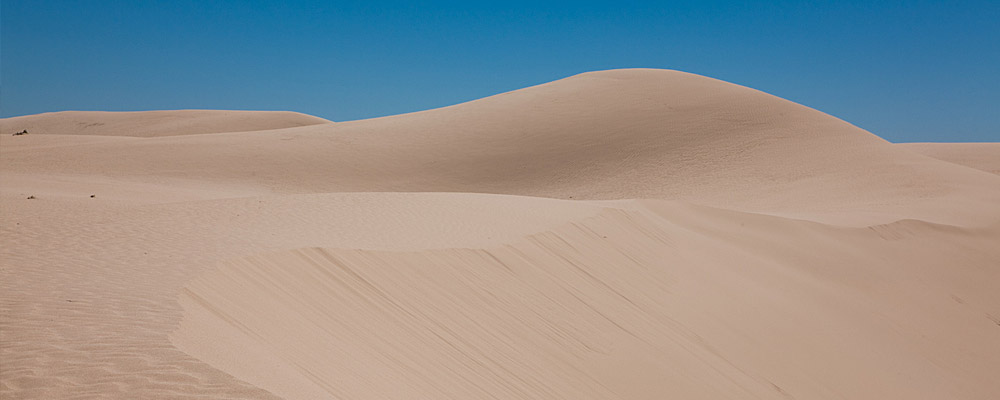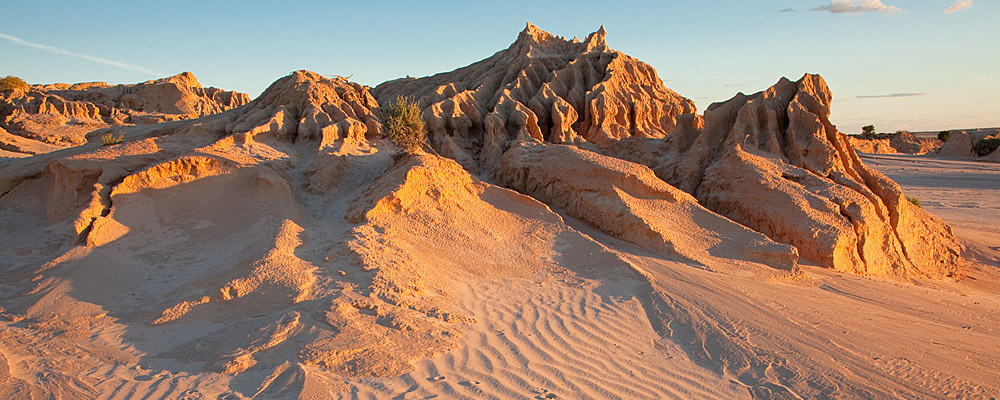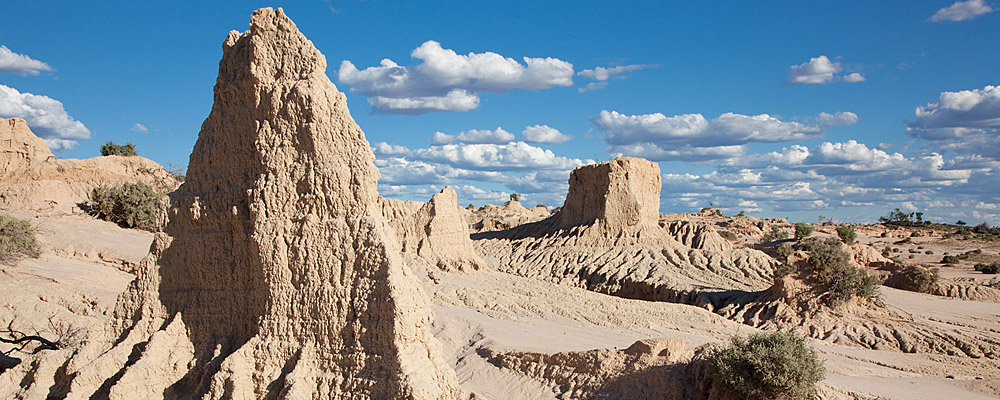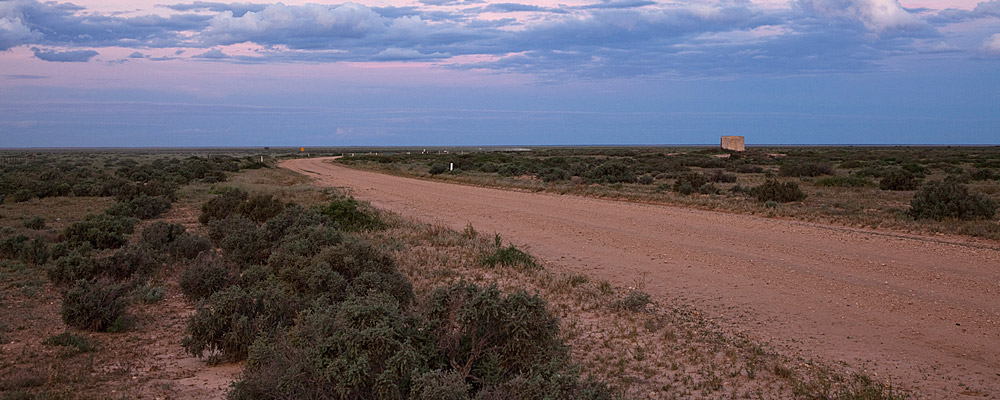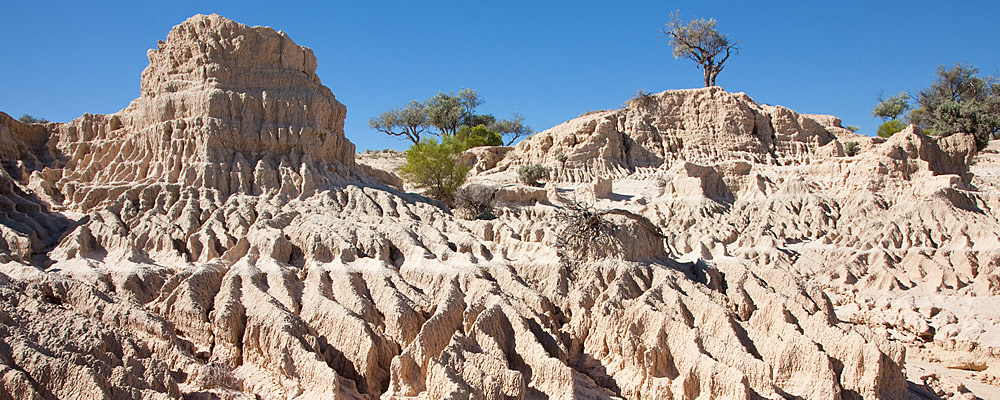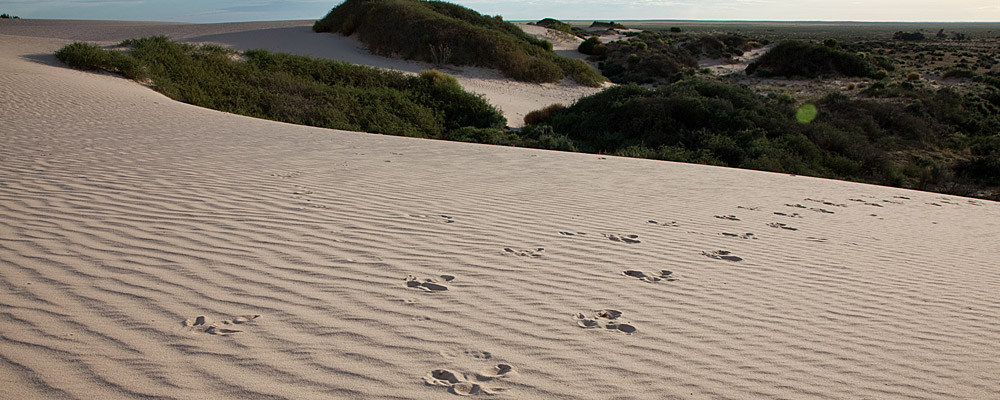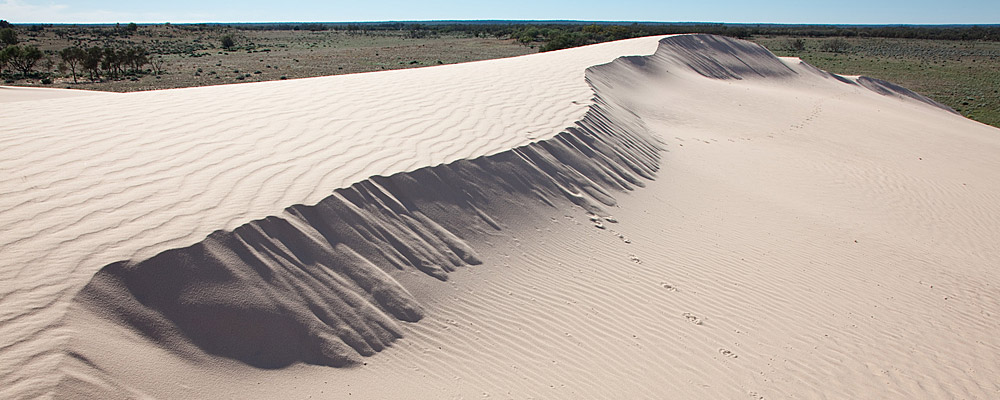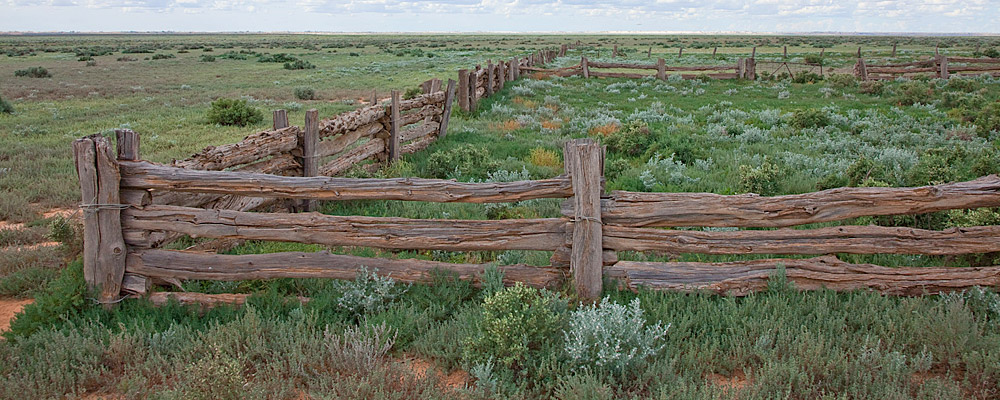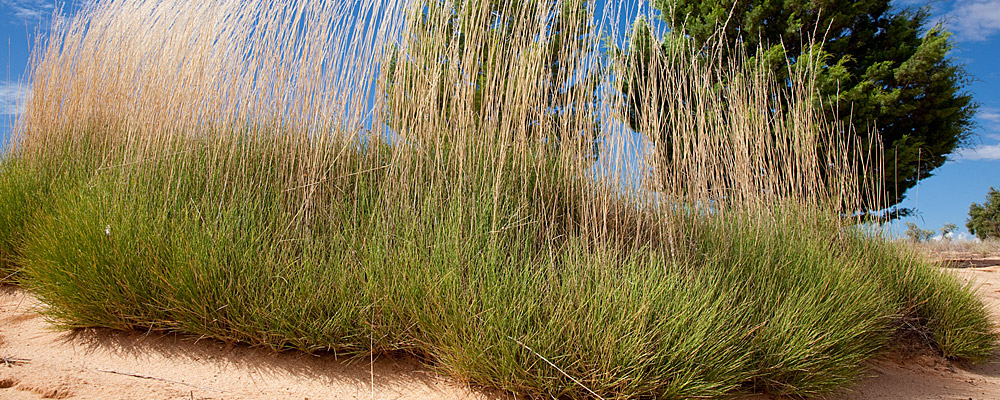Understand Mungo
Ancient Mungo Environments
Lake Mungo is different
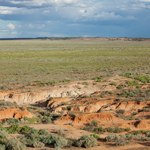
Amongst the 19 fossil lakes that make up the Willandra system, Lake Mungo is even more special. When water came down Willandra Creek, it flowed into each major lake in turn: first Mulurulu, then the vast Garnpung and the smaller Leaghur, then down to Arumpo and Chibnalwood (which sometimes merged together in high water) and finally along Arumpo Creek to the small southern lakes.
But where was Lake Mungo? Mungo was different from the other lakes because it was a terminal basin with no outlet. It only filled when Lake Leaghur, immediately to the north, overflowed along a small connecting channel. It was, in effect, 'offline' from the other lakes. So the dynamics of water, evaporation and salt would also have been somewhat different in Mungo. Exactly how different is not fully understood, but it could explain some of the special features of Lake Mungo, such as its strong record of human presence compared to the other Willandra Lakes.
The Megafauna Mystery
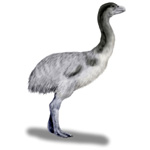
Giant beasts once roamed Willandra Lakes, the rest of Australia, and much of the world. This was during the Pleistocene epoch, between 10,000 and two million years ago. Most of the megafauna became extinct towards the end of the Pleistocene, with Africa the last remaining stronghold of large mammals into the modern era. This important and worldwide wave of extinction seems to have coincided with the arrival of humans in various continents, and the role of hunter-gatherers in wiping out the megafauna has been a hot topic of scientific debate.
Fossils of extinct megafauna are not very common at Willandra compared to some other parts of New South Wales. The giant species which have left their remains buried in the Willandra sediments include Zygomaturus, a variety of plant-eating, wombat-like diprotodont, but it is only known from a single fossil. More common are Procoptodon, a short-faced, giant kangaroo, the large wallaby Protemnodon, two large Macropus kangaroos and Genyornis, a very stout flightless bird.
Genyornis has been useful in working out when Australian megafauna became extinct, because it was widespread and left numerous fossils in the form of eggshell. Back when Australia was much wetter, Genyornis and other giant flightless birds dominated the land, but as the continent grew more arid, kangaroos and other macropods took over. All Genyornis eggshells have been dated at older than 46,000 years. This is sometimes inferred as the time when most Australian megafauna met their demise. But other evidence suggests some species survived for much longer.
So did human hunting or widespread firing of the landscape wipe out the megafauna, as some researchers believe, or was climate change the main factor, as other scientists say? It is generally thought from the archaeological record that people first arrived in Australia about 50,000 years ago, perhaps as long as 60,000 years back. Many of the megafauna were slow-moving and perhaps easily hunted, but they would also have been vulnerable to changes in their environment. However there is little evidence to show that early Australian people hunted the big animals.
The earliest signs of people at Willandra Lakes are about 45,000 years old, and preserved in their campsites are the remains of what they ate. None of the Willandra megafauna have been found in campsites. In the ancient Willandra menu, meat meant mainly shellfish, yabbies, fish and a vast array of small mammals, including hare wallabies, bettongs, bandicoots, bilbies and native rats. These species could be caught in either the lake or in lunette burrows. Larger kangaroos are less common in the remains, but perhaps these were caught and eaten away from the lakes. Maybe megafauna too were hunted and eaten on the plains?
While the jury is still out on what killed the megafauna, some more recent but pre-European extinctions may be attributable to the arrival of the Dingo (Canis lupus dingo) in Australia about 4,000 years ago. The Dingo would have competed with the Thylacine (Thylacinus cynocephalus) and Tasmanian Devil (Sarcophilus harrisii), two predators that lived in the Willandra until a few thousand years ago.
For more on Genyornis, see http://australianmuseum.net.au/Genyornis-newtoni
For more on Procoptodon, see http://australianmuseum.net.au/Procoptodon-goliah
